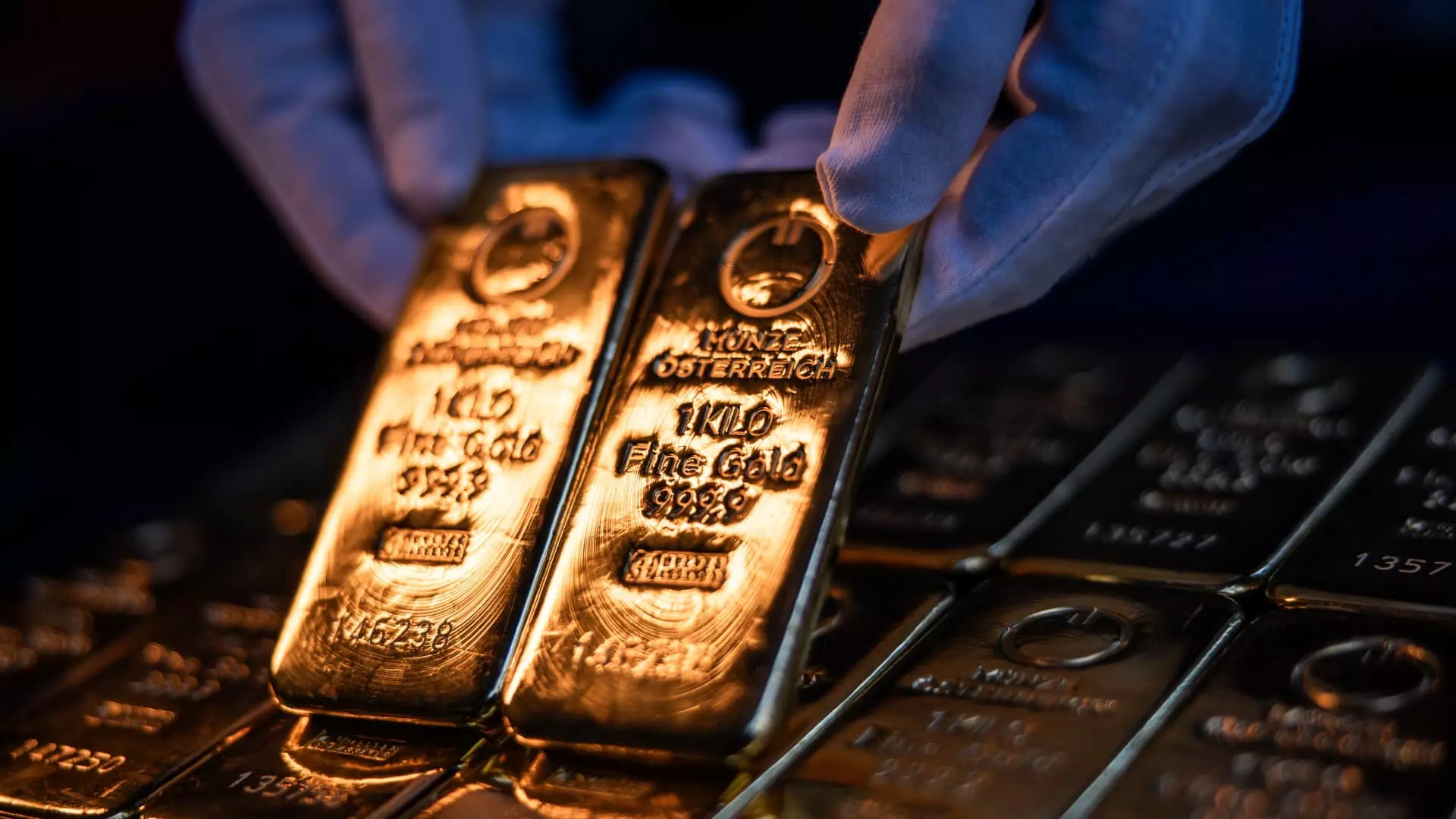In 2023, gold has captivated the attention of investors with prices surging at an impressive pace. As of late March 2023, the SPDR Gold Shares fund (GLD), a key player in tracking the price of gold bullion, reported a staggering annual return of approximately 42%. Year to date, gold prices had already climbed about 11%. As investors consider the potential for profit, financial experts caution against the impulse to invest solely based on these promising statistics.
While the price of gold presents an exciting prospect, it is essential for investors to approach with caution. The recent spike in gold prices has been driven by various market dynamics, but those who make hasty decisions may end up making the classic investment blunder of buying high and selling low. As Lee Baker, a financial professional from Claris Financial Advisors in Atlanta, advises, an allocation to gold should ideally not exceed 3% of a well-rounded investment portfolio. Chasing trends, especially in a volatile market, can often lead to detrimental financial outcomes.
Baker underscores a critical point: the current climate is potentially ripe for excessive greed. Investors are becoming increasingly enthusiastic about gold, especially after experiencing significant returns over the past year. This trend echoes Warren Buffett’s timeless wisdom: “Be fearful when others are greedy.” Baker’s sentiments highlight the underlying psychology at play, where fear and greed govern investor behavior, often leading to rash investment choices.
Investing in gold at peak prices carries the risk of a downturn. The anticipation of future gains can compel investors to enter the market indiscriminately—an impulse fueled by the fear of missing out (FOMO). The critical question remains: Are current trends indicating a peak in gold prices? With uncertainty looming over the global economic landscape, hesitation is not just wise; it is necessary.
Gold is often viewed as a sanctuary for investors during tumultuous times, surfacing as a preferred asset when economic indicators turn grim. Sameer Samana, a prominent global strategist at Wells Fargo Investment Institute, highlights that many investors buy into gold believing it offers a hedge against inflation. However, this perception may be flawed, as historical data suggests that bonds tend to outperform gold during true crises.
Additionally, the ongoing geopolitical tensions, such as the sanctions implemented against Russia, have significantly affected gold prices. These sanctions have prompted certain central banks, particularly in China, to pivot toward gold in lieu of U.S. Treasury bonds. Such dynamics have contributed to the sustained increase in gold demand and subsequent price escalation. Nevertheless, investing based on current pressures may overlook the asset’s long-term viability and potential returns.
Given the current market conditions, financial experts advise a more comprehensive approach to investing in precious metals. Rather than solely concentrating on gold, investors should treat it as part of a diversified commodities portfolio, which includes energy, agricultural products, and base metals like copper. This diversifying tactic can mitigate risk while also capturing potential upside across various sectors.
Instead of investing directly in physical gold—which presents challenges like storage and insurance costs—investors might explore options such as exchange-traded funds (ETFs) or stocks of gold mining companies. These alternatives not only enhance liquidity but also reduce the burden associated with physical assets. Baker asserts that the overhead of maintaining physical gold, along with associated insurance costs, can detract from overall investment performance.
Analysts project that while the allure of gold remains strong, there are no guarantees its current upward trajectory will persist. Baker comments that absent a significant global crisis—‘a protracted war’ or similar disaster—gold’s price may stabilize and even decline. This sentiment reinforces the notion that investors should tread lightly.
Overall, experts recommend a cautious approach, advising that a ratio as low as 1% to 2% of an investment portfolio be allocated to gold. This strategy not only secures a foothold in the precious metals market but also preserves flexibility in a diverse investment landscape. It is not just about chasing returns; rather, it is about understanding both current market conditions and the long-term implications of asset allocation.
While gold may shine brightly in today’s chaotic financial environment, it’s imperative for investors to temper their enthusiasm with informed strategy and diversified planning. Pursuing a balanced investment approach will not only help manage risk but may also pave the way for more sustainable growth in the future.

